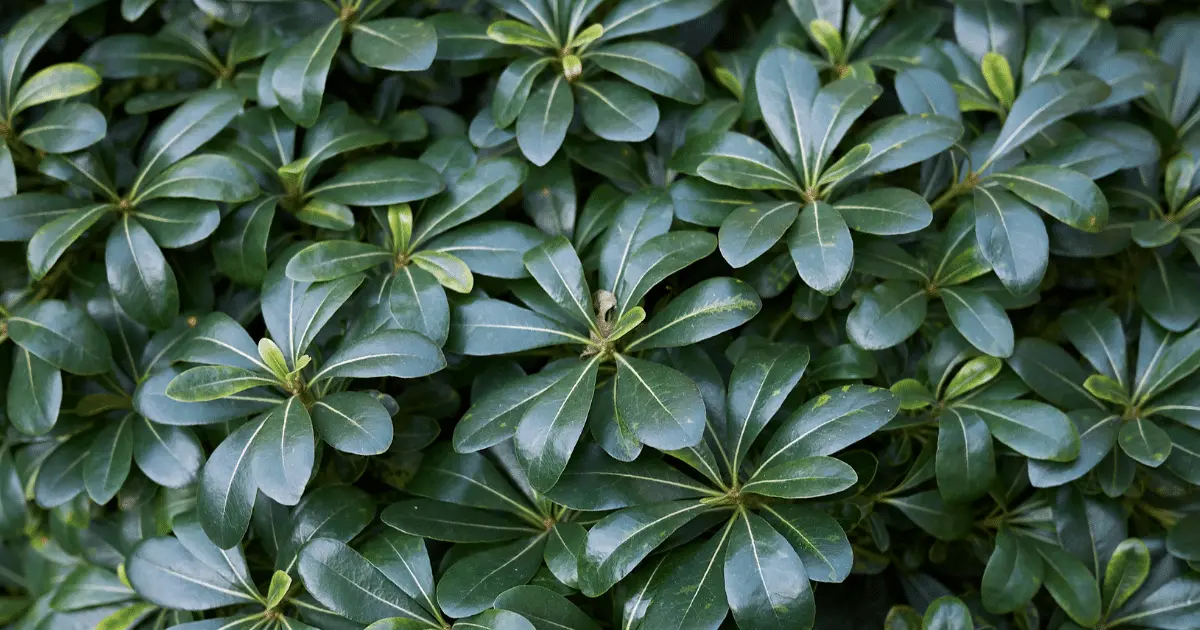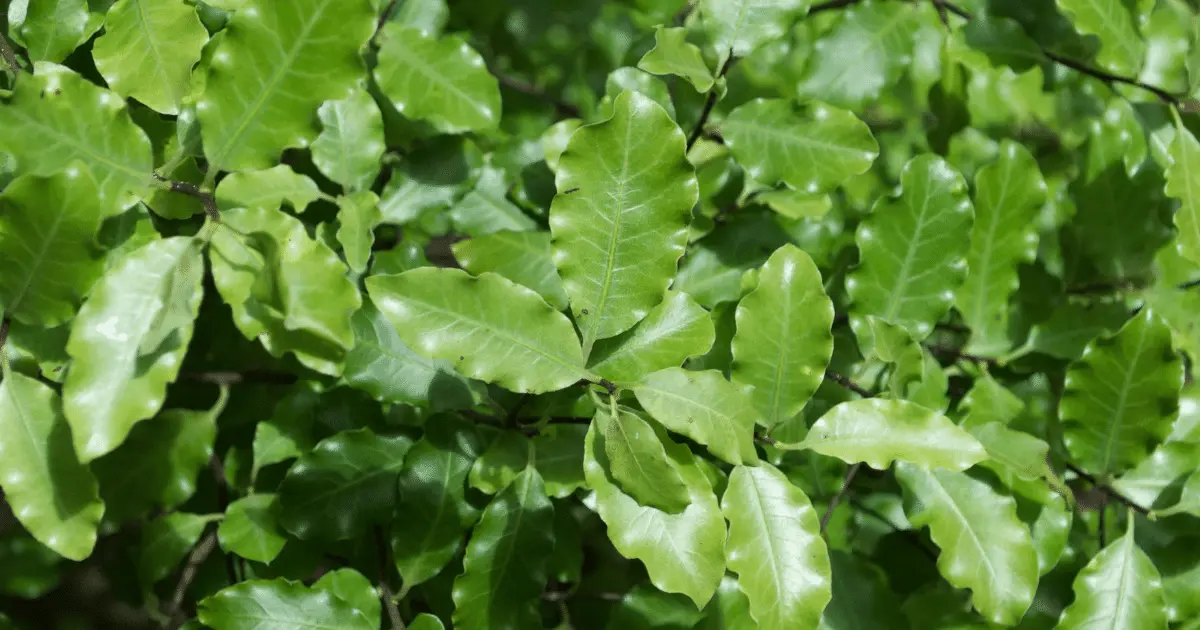Variegated pittosporum, sometimes called the variegated Japanese Mock Orange, is a plant that deserves more attention than it gets. It’s easy to grow, produces gorgeous white flowers in spring, and it’s generally pretty tolerant of its environment (as long as you keep it indoors).
If you want to add color to your yard, the variegated pittosporum is the right plant. This beautiful plant can add excellent color and texture to any yard or garden area, whether used alone or with other plants. Variegated pittosporum are fast growers that only require minimal care to thrive, making them an excellent option if you’re new to gardening or have limited space.
Here are a few simple steps to grow and care for variegated pittosporum.
What is Variegated Pittosporum?
Variegated pittosporum is a small evergreen plant with multicolored leaves. In the spring, it has little white flowers with an orange-blossom aroma, and it works well in the shrub border, as privacy screens, as mass plantings, and as a hedge. As one of the most historic and oldest types of Pittosporum tobira, variegated pittosporum will continue to play an essential role in environmental studies and gardening.
When planting your variegated pittosporum, you should make sure there are about six inches between each plant so they have plenty of room to grow. Variegated Pittosporums need lots of water throughout their life cycle – especially during the first year they establish roots.
Variegated pittosporums produce small white flowers in the springtime that attract bees and butterflies and can be used as hedges or screens for privacy. It’s used in gardens because of its tolerance to shade, drought, pollution, poor soil, and salt. They also make great windbreakers and should be planted on slopes to help prevent erosion.
The variegated pittosporum is a versatile, tolerant, multi-purpose decorative plant that may be used in any gardening situation. It grabs the sight and scent throughout its blossoming season, owing to the perfume that diffuses from its exceptionally fragrant blossoms.
Types of Variegated Pittosporum
Pittosporum, native to Africa and Asia, is commonly grown in New Zealand and Japan. It flourishes when planted in well-drained soil and full light and prefers warm temperatures. Various hybrid varieties of this plant can be utilized as small trees, hedges, and shrubs.
Some of the best Pittosporum varieties are shown below:
1. Wheelers Dwarf

The Wheelers Dwarf, also known as Pittosporum tobira ‘Wheeleri,’ is a thick plant with curling branches that make a slight curvature. It grows 3-4 feet tall and flourishes in USDA zones 8b-11. The plant begins to bloom with fragrant white blooms in early April. Some species of the Wheelers Dwarf can also be cultivated in containers.
2. Miss Muffet

Pittosporum tobira ‘Miss Muffet’ is a tiny shrub with glossy green leaves and fragrant, lovely white blooms in spring. Miss Muffet grows 3-5 feet tall and excels in USDA zones 9-10. You can also plant it in any container of your choosing.
3. Kohuhu

Kohuhu, also known as ‘Pittosporum tenuifolium,’ is an excellent hedge plant with pointed mid-green leaves that are tiny and oval. This cultivar grows 10-15 feet tall and excels in USDA zones 9-11. For the best results, plant this fast-growing specimen in full sun to partial shade.
4. Majorie Channon

Pittosporum ‘tenuifolium’ or Marjorie Channon has oval-shaped green leaves on dark brown-black stalks with white edges. It grows 8-12 feet tall and thrives in USDA zones 8-10. The shrub yields a cluster of scented purple blooms in the spring.
5. Lemonwood
Lemonwood, also known as Pittosporum eugenioides, has yellow-green leaves smudged with wavy margins. This plant grows 10-12 feet tall and thrives in USDA zones 7-10. In addition, in the spring, it produces a cluster of exceptionally fragrant yellow-cream flowers.
6. Australian Laurel

The Australian Laurel, also known as Pittosporum undulatum, has deep green, oval-shaped leaves with curled edges. This cultivar reaches a height of 10-15 feet and thrives in USDA zones 9-10. It blooms in the spring with scented five-petaled pure white blooms. One of the Australian Laurel’s highlights is its resistance to drought.
Points to Consider Before Planting Variegated Pittosporum
There are several essential points to consider before planting variegated pittosporum. They are as follows:
1. Location
Variegated pittosporums are flowering plants that you can place in your garden or on the edge of your property to add color during the winter. However, these plants thrive in locations with full sun or partial shade and must be watered two times per week.
2. The Right Soil
Your variegated pittosporum’s soil should be moist but not too wet, as the roots of this plant are sensitive to overwatering. It is essential to use pots with holes in the bottom for drainage to prevent root rot. Water your plant about once a week during the winter, but do so less frequently in warmer months.
It’s essential to keep your variegated pittosporum’s soil moist, but make sure not to drown it! One way to tell if your plant needs watering is by checking the weight of the container: if it feels light when lifted, it’s time to water.
3. Fertilizing
Pittosporum is a low-maintenance shrub that does well in most conditions. The plant grows well indoors and outdoors but should be exposed to plenty of sunlight. When growing your variegated pittosporum, ensure it has at least six hours of full sun per day.
If you are planting it outside, remember that it prefers moist soil that drains well. You should also water the plant weekly for one hour during the summer and every other week during the winter. Be sure to fertilize your pittosporum once every month to maintain its lush green color.
4. Watering
Variegated pittosporums require less water than other plants, about once a week in the summer and every two weeks in the winter. They will also be more sensitive to air pollution, so try to keep them away from major roads or busy intersections.
Many people think that variegated plants are rare but quite common. It would make an excellent addition to your garden if you can find a variegated variety of your favorite tree or shrub.
5. Pruning
When you plant your Variegated Pittosporum, you should prune it back within a few inches of the ground. This will stimulate new growth from the root system and encourage a bushy shape. After that, once a year, you can trim the shrub by about one-third to maintain its shape and size.
You also want to ensure that you don’t cut too much off at any time or that you may damage the plant and cause it to die. If your pittosporum is planted in an area where deer are prevalent, cut back only in mid-April because this is when they are most likely to browse on plants.
Steps in Planting Variegated Pittosporum
- Provide your pittosporum root with four hours of direct sunlight each day.
- Remove the plant from its pot and pluck out any surrounding roots, which can shroud the tree and eventually kill it.
- Double the depth and width of the hole as the root ball.
- Insert the shrub into the hole, spreading the roots out.
- Fill in around the roots with earth, tamping down as you go to minimize air pockets while holding the bush upright and firm.
- Water it thoroughly.
- To preserve moisture and limit weed formation, mulch the soil with an organic material such as bark chips.
Caring for Variegated Pittosporum
Variegated pittosporums are quite popular and can be grown indoors. They are also easy to care for but still need some attention. They also have a short lifespan when managed improperly. Taking care of variegated pittosporums involves a few tips:
1. Sunlight Exposure
Variegated pittosporums do not like direct sunlight. If you want to keep it in an area that receives light from a window, place it near the window so that it gets indirect sunlight. Keep your plant in a room with bright indirect light and dark periods daily.
2. Temperature
Variegated pittosporums thrive in temperatures between 60 and 80 degrees Fahrenheit (16-27 Celsius) year-round. The plant can survive outside during warm or cold months with little change in its growth rate or appearance.
3. Cross-pollination
The variegated pittosporum’s tiny but fragrant blooms attract pollinators like bees, and fertilization results in little woody seed capsules that ultimately break to release the seeds. Pittosporum shrubs are also commonly propagated through cuttings, which are coated with a root-promoting substance and put in a potting mix to grow new plants.
4. Pest Control
Scale insects, aphids, and mealy bugs are some frequent insect pests to keep an eye out for. A healthy variegated pittosporum frequently tolerates minor infestations. Consider introducing beneficial insects, such as ladybugs, that consume aphids. Root rot, angular leaf spot, and southern blight are the most prevalent diseases that affect pittosporum plants. Fungicides can also help prevent overwatering.
There you have it; the simple steps to growing and caring for your variegated pittosporum. If you’re thinking of growing variegated pittosporum, there are quite a few things you need to know about this plant. While the variety of colors it comes in can be appealing, it requires careful attention to live up to its full potential. Keep them well watered and provide them with plenty of sunlight.
